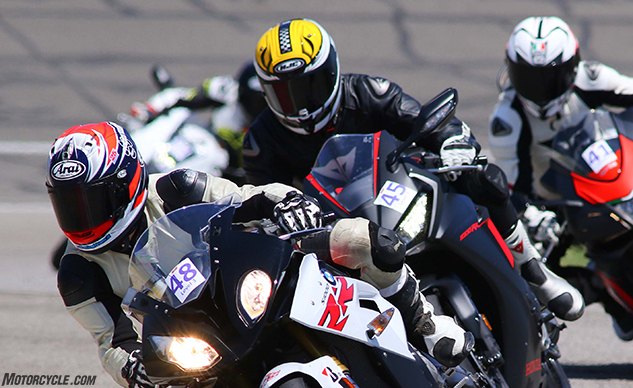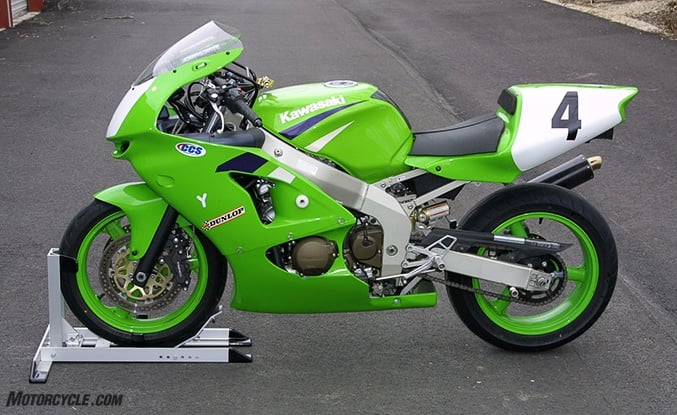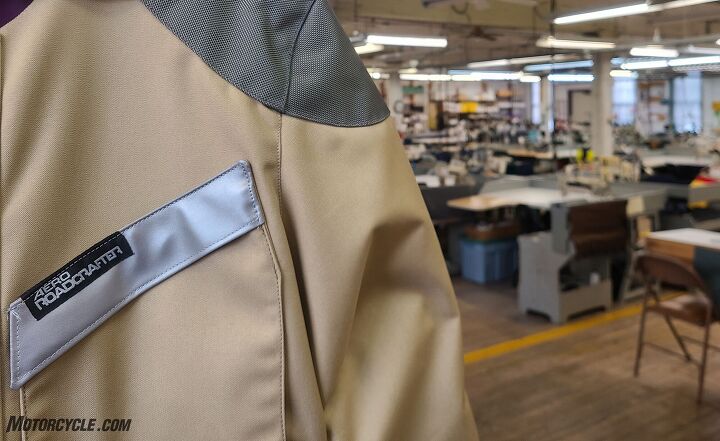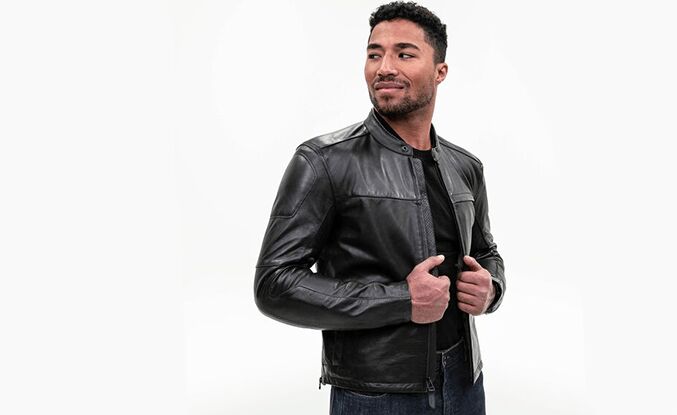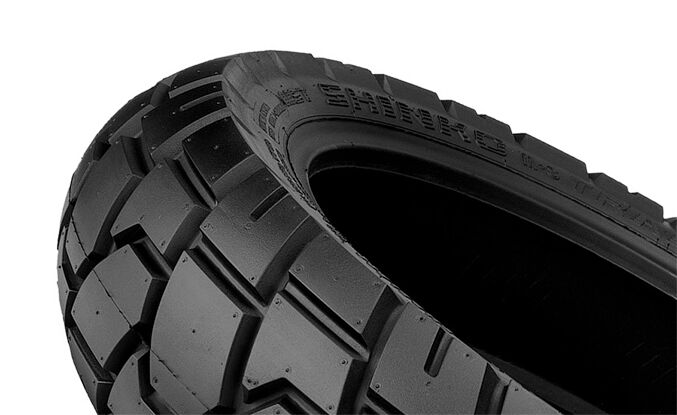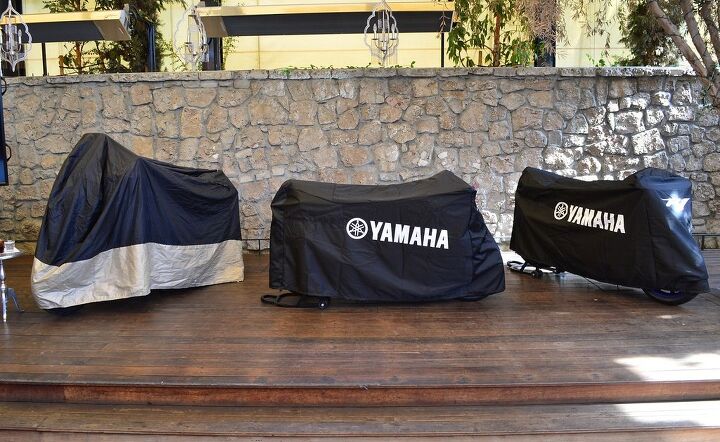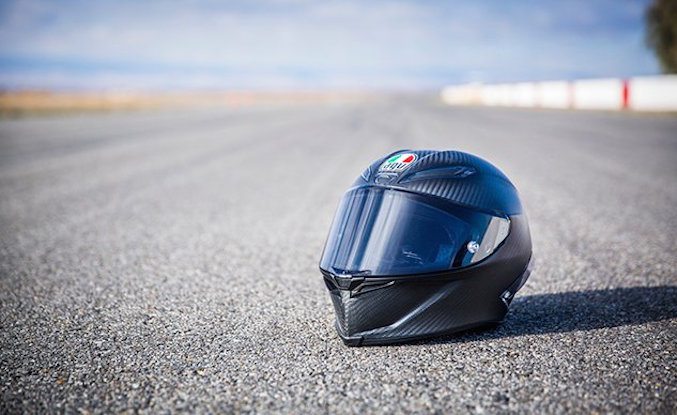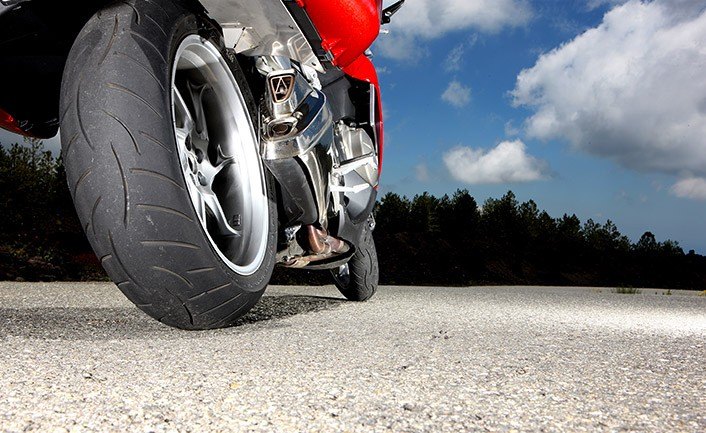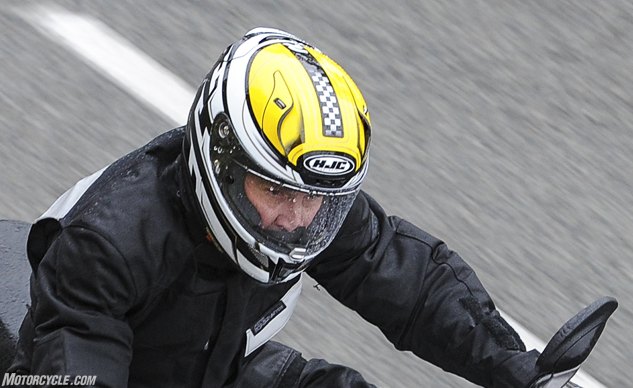Products
Keeping Your Domepiece Safe: Best Motorcycle Racing Helmets
Congratulations. You’ve made the decision to go to a trackday (or even a race). We think that’s one of the best decisions you can make with your motorcycle. Not only is track riding fun and addictive, but it’s also a great environment to improve your skills. But there’s a lot to do to get ready, like getting all your gear in order. Most important, of course, is your helmet.
Do you have a proper track helmet? Generally speaking, a good helmet for the track is full-face, with a double D-ring closure, that meets or exceeds all federal safety guidelines. You’ll have to consult with your local track or track/race organization for the specific helmet regulations they require, but the following selections are helmets we know will easily pass any tech inspection held anywhere in the US of A, and probably the rest of the world, too. A really good track helmet will have all of that, along with a bigger eye port that lets you see ahead when you’re prone on the gas tank, as aerodynamic and light a shell as possible, and great venting so you can keep a cool head.
There are many reputable helmet manufacturers out there, going about the task of head protection in their own unique ways, and there’s no way for us to sample all of them. But the helmets presented here all come from manufacturers we’d trust with our heads. Hours upon hours of time, money, and resources go into the science of making helmets as effective as possible – not just from an impact perspective, but lately, some manufacturers have poured resources into minimizing the effects of brain rotation during a crash as well. Those resources don’t come for free, however, so if you’ve wondered why top-shelf helmets cost so much, it’s because innovation has a price.
CYA: Best Motorcycle Overpants
You’ve already got the jacket, and hopefully it’s a nice, warm one as Fall will once again begin reasserting itself across the land in a month or two. Or, we hope Fall reasserts itself. Now that you’re sophisticated enough to have gotten that far, maybe it’s time to think about completing the ensemble with one of our picks for best motorcycle overpants. You can get them to add warmth and protection your jeans can’t provide. Or you can get overpants that flow air to keep your lower body cool while adding protection. Or you can get both, via the miracle of removable liners. We rounded up a quick assortment of some nice ones.
Best Motorcycle Wheel Chocks for Securing What's Important
Motorcycle wheel chocks can come in handy for a variety of purposes whether it be in your garage, truck, or trailer. Not only do they allow you to store the bike upright which saves space, they’re also great to use while working on your motorcycle or to more securely fasten your bike during transport. Wheel chocks come in a variety of materials, sizes, and styles. There are a few things you’ll want to consider when purchasing a wheel chock.
First, what kind of motorcycle will you be storing? Wheel sizes and fender placement vary quite a bit between dirtbikes, sportbikes, and cruisers. Aside from your motorcycle’s specifics, where you plan to use the wheel chock will play a part in your buying decision too. If you’re planning to simply use a wheel chock in your garage, anti-corrosion coatings may not factor into your decision as much as it would if you were planning to mount one in your truck bed. You’ll also want to decide whether you want the stand bolted down or plan to use it in a variety of locations. To make your decision easier we’ve put together a list of some of the best wheel chocks on the market below.
Aerostich: Engineered for Social Good
Aerostich’s story is one of the people. The people in Duluth handcrafting Aerostich products, and the people around the world who’ve turned the Roadcrafter one-piece suit into a cult icon. It’s about people like Andy Goldfine who staunchly believe motorcycling is inherently good for the human race, “a social good,” he says.
In 1983, as the industrial sewing industry was leaving America and equipment was being auctioned at paltry prices, Andy purchased 16 industrial sewing machines without knowing what he was going to do with them. He was at a point in his life where it was now or never, something had to give. It didn’t take long though for an idea to be born of necessity, as they often are, but it needed a name. Looking for something as generic as possible, he chose to combine aero and stitch.
REAX Motorcycle Gear: Everything You Need to Know
Reax is a relatively new name in motorcycle apparel, but most riders are probably familiar with the company behind it: retailer RevZilla and its parent company, COMOTO. Reax was only founded in 2018, but it’s been able to establish itself relatively quickly, thanks to RevZilla’s large online presence, along with its sister brands, J&P Cycles, and Cycle Gear.
RevZilla’s experience as a retailer gave REAX a head start on knowing what consumers want in motorcycle gear. REAX gear tends to have a very understated style, with a clean look and minimal branding. REAX motorcycle gear tends to be functional, providing features and a level of protection riders want at a reasonable price point.
MO Tested: Reax Gloves, Jacket, And Jeans
As an in-house private label, REAX is only available through RevZilla and Cycle Gear, which does limit your ability to shop around for better deals. The plus side, though, is that there’s no middle-man, allowing REAX to keep the prices fairly reasonable.
Shinko Motorcycle Tires: Everything You Need to Know
Shinko isn’t as well-recognized a motorcycle tire brand as the likes of Michelin, Bridgestone, Pirelli or Dunlop. Part of that is because the company is relatively new to the game. The Shinko Group was founded in Japan in 1946, producing bicycle tires and tubes as the country emerged from the Second World War. Shinko didn’t really get into motorcycles, however, until 1998, when it acquired the tire technology and molds from Yokohama.
The company continues to build on the foundation of Yokohama’s technology, conducting R&D in Japan. Shinko tires are made in South Korea, with the company churning out about 200,000 tires each month.
Though it is a bit of an underdog in the motorcycle tire market, Shinko has been able to establish a niche by offering affordable prices compared to the larger brands, while still offering solid performance.
Best Motorcycle Cover Buyer's Guide
In a perfect world, you’d probably park your motorcycle in your bedroom, where it’ll be nice and cozy, and well out of harm’s way. But, as we know, the world is not perfect, and many of us are left parking our beloved motorcycles outside, exposed to the elements and even the prying eyes of those with bad intentions.
Enter the motorcycle cover. While not as effective in protecting your bike from Mother Nature or vandals as keeping it parked inside, if you have to leave your bike outside, a cover is the next best line of defense. This is your guide to some of the different types.
There’s a surprising amount of variety when it comes to motorcycle covers, and while this guide is not intended to cover every single one of them, it should at least open your eyes to what’s available, and maybe even point you in the right direction as to which is the best motorcycle cover for you.
AGV Helmets: Everything You Need to Know
AGV is as Italian as bocce ball and torta di mele; it is to motorcycle roadracing as cheese is to tortellini – and its premium helmets could, and still can be found on the heads of such racing greats as Giacomo Agostini, Barry Sheene, and now Valentino Rossi. Not that you need to be a professional racer, now that the company produces helmets for touring, offroad, and urban riding as well.
AGV was founded in 1947 by Gino Amisano (1920–2009), in the village of Valenza in Italy’s Piedmont region, hence Amisano Gino Valenza. Trained as an accountant and having worked as a partner in a company making leather saddle covers and helmets for cyclists, Amisano’s timing was perfect, as Lambretta and Vespa introduced their first scooters in the post WW2 period. AGV began cranking out leather saddles for those revolutionary and fashionable Italian personnel carriers – along with an equally innovative leather helmet. Let the games begin.
Shoei Helmets: Everything You Need To Know
Most motorcycle riders know of Shoei Safety Helmet Corp. as being a manufacturer of premium motorcycle helmets and one of the most popular helmet brands in the world. What many riders don’t know is that Shoei began producing helmets in 1960. Prior to that, the company’s helmets were primarily directed towards the construction industry. In 1962, the company provided helmets for the motorcycle racing market, and racing remains a key component of Shoei’s helmet development to this day. You don’t think that talents like Marc Marquez would use just any helmet – no matter the sponsorship payment – do you?
In 1962, Shoei developed its first racing helmet, the SR-1. Just six years later the company had grown to the point that it opened the Shoei Safety Helmet Corporation in California. The S-12 obtained Shoei’s first Snell approval. Other milestones include: the STZ (S-20) adopted Shoei’s original two-piece structure in 1972, released the GR-Z (the worlds first full-face helmet to use carbon fiber) in 1976, released the full-face EX-2 motocross helmet in 1982, and introduced injection-molded shield designs in 1983. From there, the procession of helmets related to current models rolled out: VF-X motocross helmet (1991), RF-200 (1989), X-Eleven (2002), Multitec modular (2007), Neotec (2012), J-Cruise (2012), GT-Air (2013), and Hornet ADV (2015).
Despite the high-tech nature of motorcycle helmets, the manufacturing process is an exacting process combining state-of-the-art manufacturing and human craftsmanship. By the time a Shoei helmet is ready to be packaged and shipped, more than 50 people have laid hands on the helmet. As they have been since the company’s inception, all Shoei helmets are manufactured in Japan.
Lithium Motorcycle Battery Buyer's Guide
For ages, we didn’t think much about the batteries in our motorcycles. When you only have one option, the traditional lead-acid battery, there’s not a lot to think about. As long as it cranks the starter over and fires up the bike, you’re good. If not, time to shell out for a new one. But like all components on a motorcycle, eventually, new technology emerges to improve the breed. The battery is no different. With the emergence of the lithium motorcycle battery the consumer now has more options.
To the average consumer, a battery is a battery. What separates one from the other? For starters, the internal chemistry is very different between the two, but for the purposes of this guide, we’ll stick to the practical differences. Generally speaking, lithium’s biggest advantage is its drastically reduced weight and physically smaller size compared to lead-acid. Lithium also has a significantly lower discharge rate – the amount of charge lost simply sitting – compared to lead-acid, faster recharge rate, more cranking amps (compared to a similar lead-acid application), and safer handling due to its internal chemistry not featuring lead and, yes, you guessed it… acid. The tradeoff, of course, is a significantly higher price tag.
Despite this, there’s nothing wrong with lead-acid batteries, and if you’re looking for the lightest hit on your wallet to power your motorcycle, then by all means. However, if you’re looking for a performance edge and value slicing weight wherever possible, then read on as we highlight different companies in the lithium battery game. They’re listed here alphabetically, even though we normally rank products. The reasoning is simple: Batteries all essentially perform the same task, many are bike-specific, and choosing one isn’t necessarily any better than another.
The Best Motorcycle Jeans To Keep You Safe And Look Stylish
UPDATE 2/7/2023: We’ve since published a huge three-part motorcycle denim buyer’s guide that features 34 different pairs of denim, with selections for both men and women. Some of them are featured in the story below, but you can see them all by clicking over to the Buyer’s Guide.
It’s a little strange that, considering how long people have been wearing jeans and riding motorcycles, the idea of riding denim is still relatively new. Nonetheless, we’re happy apparel manufacturers far and wide have developed jeans we can wear both on and off the motorcycle. In case you’re not aware of why this is important, allow us to fill you in. Your standard pair of Levis may be really comfortable, but regular denim is terrible at protecting you if you fall off your motorcycle. When denim meets asphalt, it shreds to pieces in seconds. Not to mention that it provides no impact protection to your knees or hips.
Riding denim addresses these issues by incorporating some kind of reinforcing fiber to greatly bolster the jean’s ability to withstand road rash. Built-in pockets are made to accept different levels of armor to protect your knees and hips from impact with the ground. The tradeoff is a slightly heavier garment with a little less airflow, but overall riding jeans are a more comfortable alternative than dedicated technical riding pants.
Below are our picks for some of the best motorcycle riding jeans on the market today.
These Boots Were Made For Riding: Best Women's Motorcycle Boots
Metzeler Tires: Everything You Need To Know
Fun fact: Metzeler, the company we now know for its motorcycle tires, used to be in the business of making sausage casings. Yeah, sausages. Like the things we stick between buns and eat at baseball games. This was just one of the many different business ventures under the Metzeler umbrella during its 158-year history.
For a clearer context, let’s go back to the beginning. Robert Friedrich Metzeler founded the eponymous company in 1863 in Munich, Germany, producing rubber goods ranging from surgical equipment to children’s toys. The company’s early claim to fame, however, came in 1878, as it developed and produced an air-tight fabric made from rubber (among other things) to form the world’s largest tethered balloon for that year’s Paris World Exhibition. Spanning 36 meters (118 feet) in diameter, attendees of the fair could get a view of Paris from as high as 500 meters (1,640 feet) in the sky.
Best Motorcycle LED Headlight
Many new motorcycles still use halogen bulbs in their headlights, which rarely pump out as many lumens as we motorcyclists would like. While some manufacturers have begun to make the leap to full LED systems, sometimes they still don’t cast enough light in the dark to warn you of the impending danger just out of that stock headlight’s reach. Time to turn to the aftermarket. We’ve put together a list of some of the biggest names in the game to replace your stock headlight with a brighter more powerful LED unit. Here is our list of the best motorcycle LED headlights.



